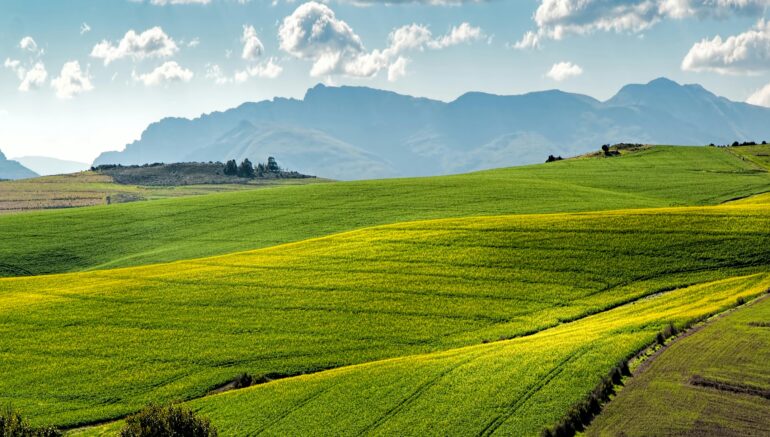
January 26, 2025
How Climate Change Affects Agriculture? and What We Can Do About It?
Climate change is one of the most significant challenges facing agriculture today. Rising temperatures, changing precipitation patterns, and an increase in extreme weather events are all disrupting farming practices and affecting crop yields worldwide. This blog explores how climate change is impacting agriculture and the measures farmers can take to adapt and build resilience.
How Climate Change is Affecting Agriculture?
1. Decline in Crop Yields:
Higher temperatures and unpredictable weather patterns are reducing the yields of staple crops like wheat, rice, and maize. Prolonged heatwaves and droughts stress crops, while intense rainfall can lead to flooding and soil erosion, all of which disrupt plant growth and reduce harvests.
2. Shifts in Growing Seasons:
Changing climate conditions are altering growing seasons, with some crops being forced to grow in shorter or less predictable timeframes. This shift can lead to lower productivity and disrupt the planting schedules that farmers have relied on for generations.
3. Increased Pest and Disease Outbreaks:
Warmer temperatures and changing humidity levels are creating ideal conditions for pests and diseases to thrive. Crops that were previously unaffected are now becoming vulnerable to new threats, resulting in increased losses and higher costs for pest control.
4. Water Scarcity:
Climate change is exacerbating water scarcity in many regions. Droughts and reduced rainfall are making it harder for farmers to access the water needed for irrigation, leading to lower productivity and, in some cases, the abandonment of farmland.
5. Soil Degradation:
Intense weather events, such as heavy rains and strong winds, are causing soil erosion, nutrient loss, and degradation. Poor soil health reduces crop productivity and makes it difficult to sustain long-term agricultural activities.
How to Adapt?
1. Adopting Climate-Resilient Crops:
Farmers can switch to growing crops that are more tolerant of extreme weather conditions, such as drought-resistant or heat-tolerant varieties. These crops are specifically bred to withstand the stresses caused by climate change, ensuring better yields under challenging conditions.
2. Improved Water Management:
Efficient irrigation systems, such as drip irrigation and rainwater harvesting, can help farmers make the most of limited water resources. Smart irrigation technologies that use data from sensors and weather forecasts can optimize water use and reduce waste.
3. Diversifying Crop Choices:
By planting a wider variety of crops, farmers can reduce their reliance on a single crop that may be vulnerable to changing climate conditions. Crop diversification also improves soil health and reduces the risk of total crop failure.
4. Conservation Agriculture:
Conservation agriculture practices, such as no-till farming, cover cropping, and crop rotation, can help maintain soil health and reduce the impact of extreme weather. These methods enhance soil fertility, conserve moisture, and protect against erosion.
5. Utilizing Technology and Data:
Technology can play a critical role in helping farmers adapt to climate change. Tools like precision agriculture, satellite imagery, and AI-based predictive analytics can help monitor crop health, predict weather patterns, and optimize farming practices to mitigate risks.
6. Agroforestry Practices:
Integrating trees into agricultural systems can help protect crops from extreme weather, improve soil quality, and enhance biodiversity. Agroforestry also serves as a carbon sink, reducing greenhouse gas emissions and contributing to climate change mitigation.
7. Improving Storage and Supply Chains:
Building better storage facilities and strengthening supply chains can reduce post-harvest losses caused by extreme weather. This ensures that more food reaches markets and reduces the economic impact on farmers.
Climate change poses significant challenges to agriculture, but it also presents an opportunity to rethink and reshape farming practices for a more sustainable future. By adopting climate-resilient strategies, leveraging technology, and working collaboratively, farmers can mitigate the impact of climate change and ensure food security for future generations.
The journey toward climate adaptation in agriculture is not just about survival, it’s about thriving in a changing world while preserving the environment for years to come.





